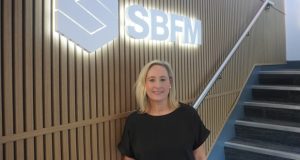THE HOME FRONT
Whereas before the crisis, FMs were managing a relatively small number of offices they’re now managing thousands of individuals working from home. This presents its own set of challenges. Siddons reports that his greatest concern is in managing people’s wellbeing. While the technology has worked he explains, not everyone is in a home environment or mental space that is best suited to home working for prolonged periods, particularly with limited social contact.
Mike Grimmel, Director FM Platform UK&I at Sodexo agrees. “The biggest challenge is replacing the social interaction that comes with [office life] and ensuring that everyone’s mental wellbeing is maintained. As an industry we are built around engagement, interaction and teamwork, so keeping our people connected is key to success during these times.”
Hausmanis says it is important that the FM profession takes steps to monitor stress levels and “intervene to provide alternatives to the canteens and lounges where we previously shared our worries and burdens”.
Agile working of course isn’t entirely new, as Bentley explains. “As part of Mitie’s business transformation, we have invested heavily in our IT systems and devices and have encouraged our employees to take advantage of agile working.
“Many of our teams are mobile so need to be able to work in a variety of locations, be that in one of our offices, on client sites, or at home. Having already implemented the collaboration tool, Microsoft Teams, across the business and asking all meetings to be held via video or phone call to minimise travel, many Mitie colleagues are already adept at working with those based at other sites. And regular communications to all staff is essential.”
BACK TO WORK
The lockdown will come to an end, and people will be expected to return to the office, but in the longer term, will the sudden shift to home working affect how organisations and the FMs who run their facilities operate in the future?
Siddons believes it’s too early to assess. “Most organisations will be able to measure the effect that wide-scale home-working has on productivity. However, the impact of a lack of physical interaction within teams will be less easy to determine. The test will be whether leaders adapt their approach in a way that best fits their organisational needs.”
In an effort to establish an evidence base on the impact of home working, RICS/IFMA has joined forces with researchers from the Leesman Index to compile a survey to help offer organisations more clarity when it comes to understanding how their dispersed workforce is being affected by working from home.
Says Bagust: “Some people are saying this is the end of the office, we don’t need them anymore but others miss it and want to be in an office. This is why we need more data on how the industry works, and why the Leesman piece is measuring the preparedness and the impact of home working on productivity.”
The other question is how willing staff will be to return to ‘normal’, now they’re used to the ‘new normal’ of home working. Advanced Workplace Associates (AWA) has been at the forefront of workplace innovation for years, and champions agile working and activity-based working (ABW) as a tool for change and empowerment.
Says co-founder and Director Andrew Mawson: “What we know about neuroscience is that the predominant function of the brain is to maintain your physical and mental safety. Once the brain finds itself in a position where it feels safe, it clings to that. To get the brain to move to from this state, requires a lot of communication – which comes into play with change management.
“The old safe state was an office where you went to do the work. The unsafe was encouraging people to work away and do things differently. Now we’ve been pushed into a new safe state, which is working from home. When the government allows office workers to return, the new safe state humans are going to ask, ‘well actually this has been working pretty well, what is it that I can do in the office that I couldn’t do before?’
“It is going to be fascinating to watch as the ‘new, new normal’ is going to be much more akin to a flexible working model and you only go into the office for a purpose which is clearly of value. When you think of all that in the context of managing the workplace, my question is: ‘who is going to manage a workplace which is based in everybody’s houses?’”
According to Bagust when it comes to corporate real estate, after lockdown organisations will be asking themselves, how much space will occupants feel comfortable with and will they want to sit as close to people as they used to sit?
Factors such as personal hygiene and distance between colleagues could become “metrics by which we judge workspace quality” argues Hausmanis. “Impacting on the service contracts put in place to support them. Knowing how cost is typically squeezed on these contracts, we can expect such provision to come at the expense of other services with an effect on employee experience.”
But the social aspects of the workplace shouldn’t be overlooked says Grimmel. “If anything, offices and other places of work will become even more important as social contact is what everyone is missing at the moment. For those of us in FM this provides a fantastic opportunity to help our clients create working environments that reflect these needs. Collaboration and social interaction will become more important as the heart of the workplace moving forward.”
SAFE AND SECURE
When people do re-enter the workplace, what will remain a key issue for FMs is maintaining high standards of cleanliness and infection control to make sure the workforce stays as safe as possible. Says Bentley: “Keeping employees safe has always been a priority and a key part of our procedures; through extensive QHSE training and the use of PPE where required. This is now ever more important, while clean washrooms; hand sanitisers; regular anti-viral/bacterial cleaning will become the new normal.”
Whether ways of working will change is also a matter of conjecture. Hausmanis believes that some organisations may consider a return to cubicle-based work environments as they look to support a form of social distancing within the office. By contrast, Mawson argues that as long as the environment in which you are operating is clean and safe, agile working remains an option.
He suggests: “You could operate different regimes around hot desking. Some might come in and have a desk for a day, and as long as the desk and space around it is cleaned at least a couple of times a day, why would you worry about where you sit? Another organisation might offer a space in the morning, with someone else utilising it in the afternoon.”
In whatever way a workplace is managed, as Grimmel of Sodexo explains: “The importance of preventative disinfection cleaning will become very important. Visible thorough regular cleaning of touch points, along with improved personal hygiene arrangements will be essential in all workplaces going forward.”
And behaviours around cleanliness is allied to this, says Rowland. “Basic infection control measures, particularly personal hygiene will be at the forefront. We have been sharing the government’s latest advice with our teams and are emphasising the need for these to be followed.”




